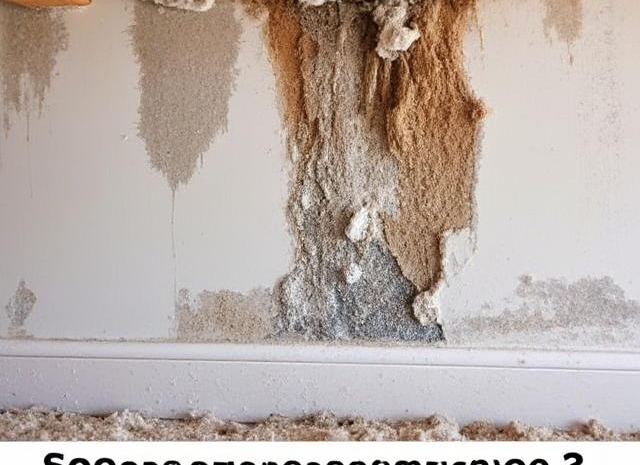
Does Home Insurance Cover Mold Damage? What You Should Know
Mold damage in your home can be a serious concern, and whether or not it’s covered by home insurance depends on several factors. Most standard home insurance policies provide some level of coverage for mold, but there are important exceptions and limits to be aware of. Here’s what you should know about mold coverage in your home insurance policy:
1. When Does Home Insurance Cover Mold Damage?
Home insurance typically covers mold damage if it results from a covered peril, such as a burst pipe, roof leak, or storm damage. For example, if a pipe bursts in your kitchen, causing water damage that leads to mold growth, your insurance may cover the cost of mold removal and repairs, as long as the damage is caused by an insured event.
In general, home insurance policies will cover mold damage if:
- The cause of the mold is covered: If the mold is caused by an event that is covered under your policy (e.g., fire, windstorm, or burst pipe), your insurance may cover mold removal and repairs.
- The mold is discovered soon after the covered event: If you act quickly to prevent the mold from spreading, insurance is more likely to cover the costs associated with removing the mold and fixing the issue.
2. When Is Mold Damage Not Covered by Home Insurance?
While many policies offer some mold coverage, there are often exclusions that homeowners should be aware of:
- Negligence or Lack of Maintenance: If the mold is a result of neglect or poor maintenance (e.g., failure to fix a long-standing water leak or not using proper ventilation), insurance typically will not cover the damage. Mold caused by flooding, long-term water damage, or other preventable issues may not be included.
- Flooding: Most standard home insurance policies do not cover mold damage that results from flooding. If your home is flooded, you would need separate flood insurance to cover mold and water damage.
- Gradual Damage: Home insurance policies typically don’t cover damage that occurs gradually over time, like slow leaks that eventually lead to mold growth. You’ll need to demonstrate that the mold resulted from a sudden and accidental event.
3. What Is Usually Covered?
If your home insurance covers mold damage, it may pay for the following:
- Mold Removal: Insurance may cover professional mold remediation to remove the mold and prevent further health hazards.
- Water Damage Repairs: If the mold was caused by water damage (from a burst pipe, for example), your policy may cover the cost of repairing the water source and cleaning up the mess.
- Repairs to the Home: Home repairs necessary due to mold damage may be covered. For example, you might need to replace damaged drywall or flooring, which could be part of your insurance payout.
4. How to Prevent Mold Damage
To reduce the chances of mold damage and potentially avoid a claim denial, there are some proactive steps you can take:
- Fix Leaks Promptly: If you notice a water leak, get it repaired as quickly as possible. A small leak can lead to a large mold problem if left unchecked.
- Maintain Good Ventilation: Mold thrives in damp, poorly ventilated spaces. Ensure that areas like bathrooms, kitchens, and basements are well-ventilated, especially after a water-related incident.
- Use a Dehumidifier: In areas with high humidity (such as basements), consider using a dehumidifier to reduce the moisture in the air and prevent mold growth.
- Inspect for Mold Regularly: Conduct regular inspections of areas prone to mold, such as bathrooms, kitchens, basements, and attics. Catching mold early will help prevent more serious damage.
5. What To Do if You Have Mold Damage
If you suspect or discover mold in your home, it’s important to act quickly:
- Contact Your Insurance Company: Report the issue to your insurer as soon as possible. They can guide you on the next steps, and in some cases, they may recommend a professional mold remediation service.
- Document the Damage: Take detailed photos of the affected areas and any water damage to provide evidence to your insurance company. This will help with the claims process.
- Prevent Further Damage: Try to control the situation by eliminating the source of moisture (e.g., shutting off the water supply if a pipe has burst) and drying out the area as much as possible. However, avoid disturbing large areas of mold, as it can be hazardous to your health.
6. Additional Coverage for Mold
If you’re concerned about mold damage, you may be able to purchase additional coverage through an endorsement or rider to your existing home insurance policy. These add-ons can provide extended protection for mold and mildew, especially if you live in a high-humidity area or have a history of mold issues.
7. Flood Insurance and Mold
As mentioned earlier, flood damage is not covered by a standard homeowners policy, so mold resulting from a flood won’t be covered by your regular policy. However, if you live in a flood-prone area, it’s highly advisable to purchase flood insurance through the National Flood Insurance Program (NFIP) or a private provider. This will help protect you from water damage, including mold that results from flooding.
8. State-Specific Mold Laws
Keep in mind that mold coverage may vary depending on where you live. Some states have laws requiring insurers to offer mold coverage as part of their standard policies, while others may allow insurers to exclude mold coverage or limit it to specific circumstances. Be sure to check your state’s regulations and your policy details to understand how mold damage is treated in your area.

